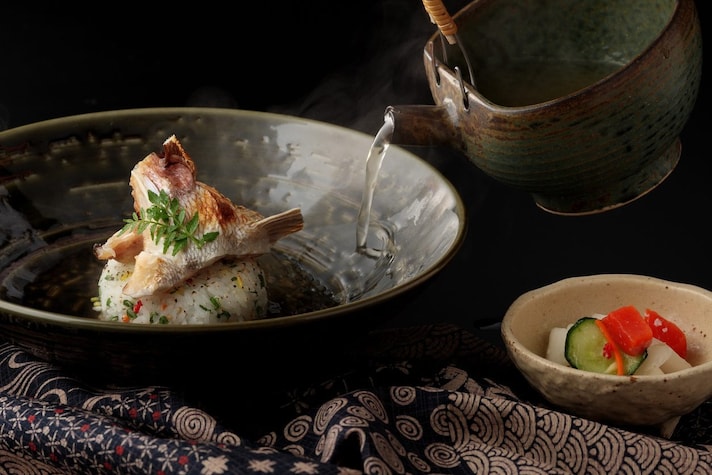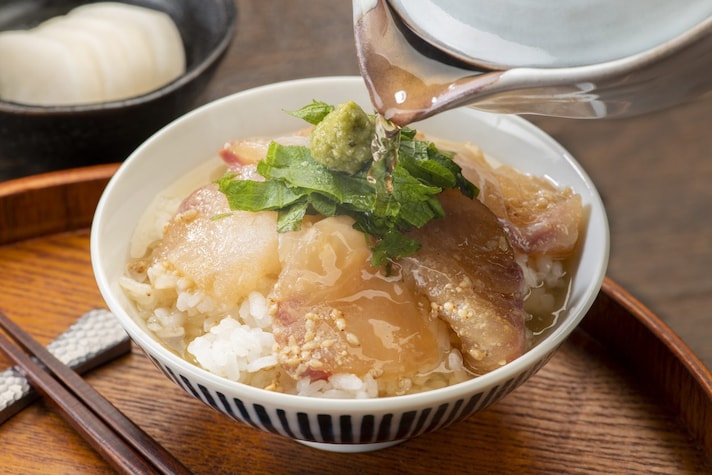What is Ochazuke, the Rice Enriched With Green Tea That is Served (Almost Always) At the End of a Meal
A dish that combines two fundamental elements of fine Japanese cuisine: rice and green tea. A combination that, despite seeming simple, contains a true gastronomic experience. We explain everything about ochazuke.
;Resize,width=742;)
It is a true icon in the culinary culture of the Land of the Rising Sun: ochazuke. If you really like Asian and Japanese cuisine, we absolutely recommend you try it: it is not only a dish that lends itself very well to photos on social media, given the very elegant final composition, but it is truly a delicacy, with a balanced and delicate flavor.
What is Ochazuke?
When we talk about ochazuke we are referring to nothing more than a bowl of steamed white rice over which hot green tea is poured. These two are the main ingredients for the recipe which can then be combined with different condiments. Basically it is one of those dishes that we usually call "lapskasus" and can be combined with the most disparate ingredients. From smoked salmon, to grilled vegetables, meat, ikura (salmon eggs), but also sashimi, wasabi or umeboshi (fermented plum): in short, you have to give space to your imagination and to what is in the fridge at that precise moment.
Ochazuke literally means rice with tea in Japanese and, although it is considered an excellent breakfast dish, in its homeland it is actually good at any time and is considered perfect as a snack before lunch or dinner. Usually in high-end restaurants, in Japan this dish is served as the penultimate course, before dessert because it is considered perfect to satisfy the last post-dinner hunger pangs.
In Japanese culinary culture, it is considered a symbol of comfort and simplicity and is often consumed in the famous tea ceremonies because the drink that accompanies the dish has a strong connection with the local culture. According to Japanese chefs, ochazuke also represents the philosophy of ikebana (the art of flower arrangement) and wabi-sabi (appreciation of beauty in imperfection).

What Does Ochazuke Taste Like?
Green tea is chosen because it has a more delicate and balanced flavor. Using a tea with a stronger flavor, such as black tea, would upset the harmony of the flavors of the dish, also due to the additional seasonings to be added. After all, tea is a very versatile ingredient that can be used in many recipes, from tea cocktails to desserts such as the famous mochi or matcha cakes. For ochazuka, traditional green tea is used, which can be of different types and qualities:
- Sencha: A fresh and sweet tea on the palate. Its flavor can be reminiscent of vegetables such as spinach or chard and is more balanced than other types of Japanese tea.
- Matcha: Although this is the most well-known variety of green tea in the West, it is not widely used for ochazuke as it gives a fuller appearance and a more intense flavor to the dish, thus creating contrast with the lightness of the rice.
- Gyokuro: A very high quality green tea, sweeter and more aromatic with a rich and rounded flavor. This can give further harmony to the flavor of the dish if paired with sashimi or fresh fish in general.
- Genmaicha and Hojicha: the first is a green tea mixed with toasted rice, the second is always green tea but toasted. Generally they are not at the first place of choices when deciding to prepare an ochazuke, their flavor vaguely recalls dried fruit, while the first mentioned have more vegetal notes.
In short, this plant plays a fundamental role in the dish by balancing and softening all the other flavors, regardless of the seasoning. The freshness of the tea integrates with the heat of the rice creating a contrast that stimulates the palate without weighing down the stomach.

Tea is a food that purifies and relaxes just as suggested by Japanese philosophy that sees this as a drink capable of harmonizing body and mind. Defined as a comfort food, ochazuke is not very popular in our parts even if, little by little, together with the whole trend of Japanese cuisine, it is starting to be known.
;Resize,width=767;)



